"Portability" - the main trump card cloud strategy Red Hat
- Transfer
Portability - portability, portability, portability. A term for software portability. The term is not established but is used on the Internet.
Red Hat pulled the veil of secrecy from its cloud-based strategy. The company intends to focus on promoting interoperability and software portability.
Red Hat's cloud strategy focuses on PaaS (Platform-as-a-Service, platform-as-a-service), based on middleware JBoss and designed to provide freedom of choice and thus become the preferred platform for developers of cloud-based applications.
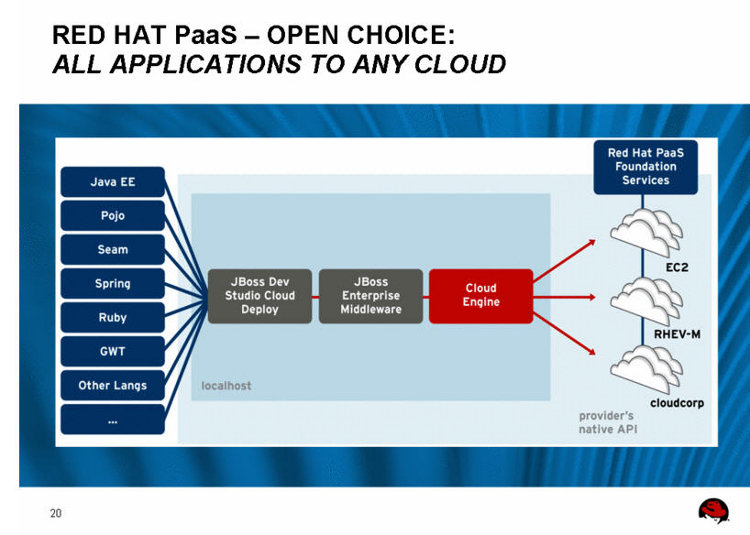
Paul Cormier, president of Red Hat's product and technology business, said Red Hat is committed to adapting all of its products for cloud computing. According to Cormyr, there are only two companies that can provide a complete stack of software for building a "cloud" - Red Hat and Microsoft.
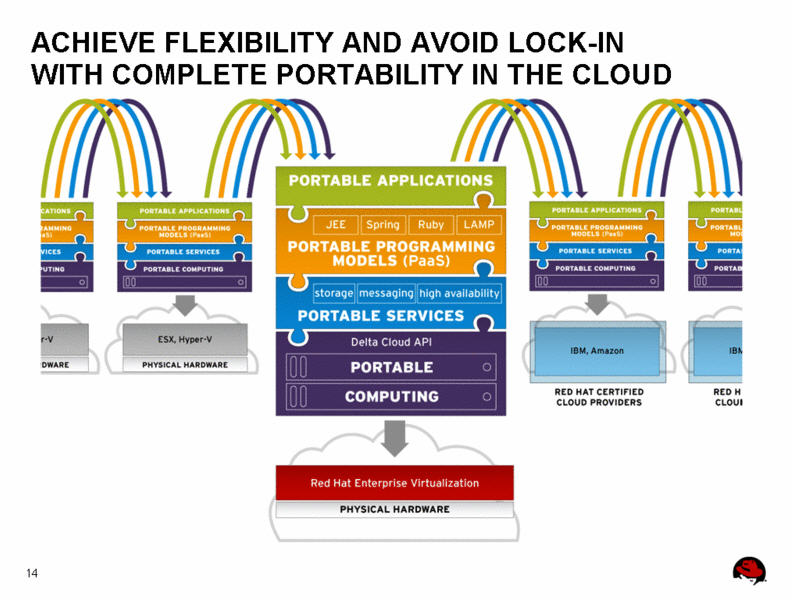
In other words, Red Hat is positioning its products for cloud providers, and as an alternative to the Microsoft Azure platform. And the main argument of Red Hat: "Clients should not be locked in a cloud platform."

The leaders of Red Hat say that the management of the infrastructure of companies will become more and more hybrid - part of it will inevitably be transferred to the "cloud". The company's plan is to be at the center of such hybrid environments. It should be noted that in the cloud management market, in addition to Red Hat, there are several other players from BMC Software and CA to Hewlett-Packard and IBM.
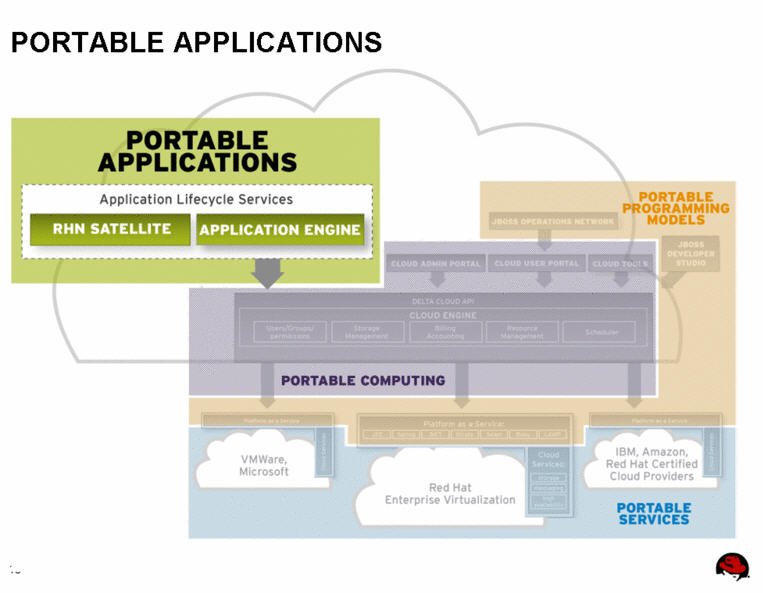
In general, Red Hat strives to outperform virtualization competitors such as VMware and Citrix in the same way that it has succeeded in the server market. Among the key areas of Red Hat cloud plans are:
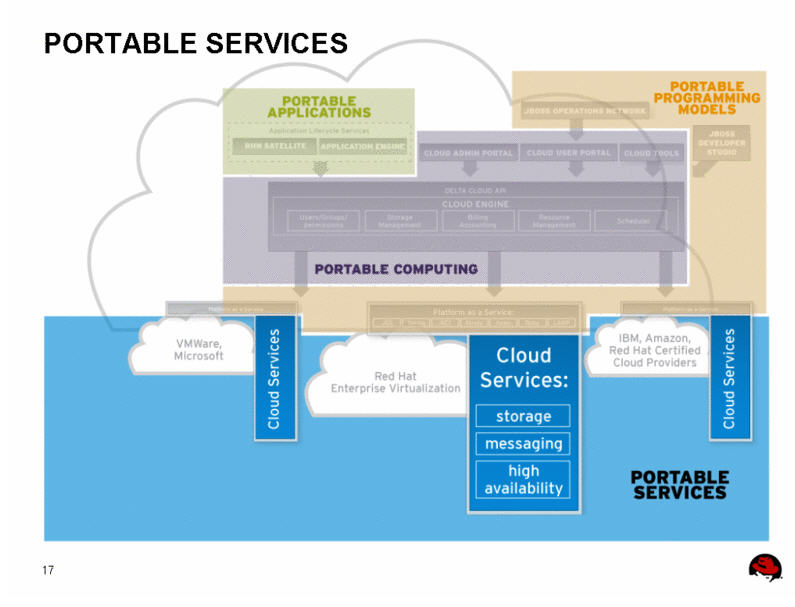
Portability is always relevant, which is why this is a strong argument in Red Hat’s position. After all, vendor lock-in is a big problem for tech leaders considering the use of cloud computing. Given that Red Hat has almost all the components for building “clouds,” the company's strategy involves independence and neutrality with respect to other software and hardware vendors.
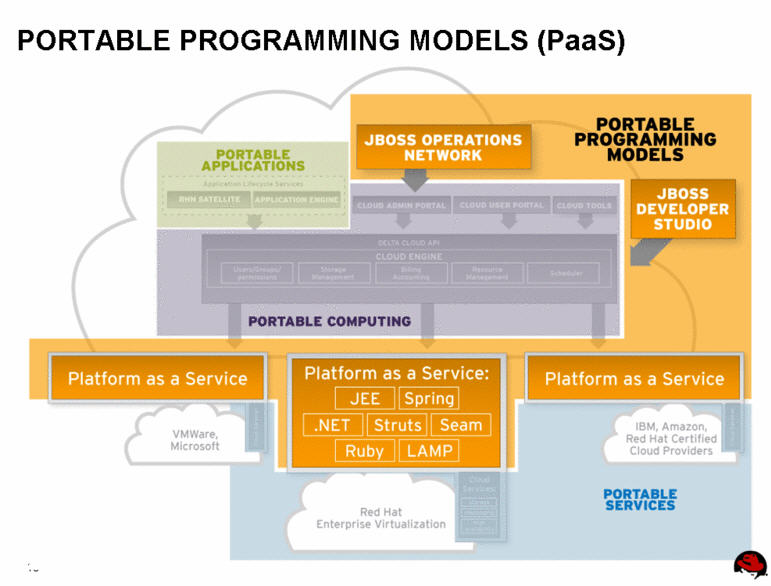
In other words, Red Hat will try to take over the market by providing portability to applications between providers of cloud infrastructure and services.
Red Hat pulled the veil of secrecy from its cloud-based strategy. The company intends to focus on promoting interoperability and software portability.
Red Hat's cloud strategy focuses on PaaS (Platform-as-a-Service, platform-as-a-service), based on middleware JBoss and designed to provide freedom of choice and thus become the preferred platform for developers of cloud-based applications.

Paul Cormier, president of Red Hat's product and technology business, said Red Hat is committed to adapting all of its products for cloud computing. According to Cormyr, there are only two companies that can provide a complete stack of software for building a "cloud" - Red Hat and Microsoft.

In other words, Red Hat is positioning its products for cloud providers, and as an alternative to the Microsoft Azure platform. And the main argument of Red Hat: "Clients should not be locked in a cloud platform."

The leaders of Red Hat say that the management of the infrastructure of companies will become more and more hybrid - part of it will inevitably be transferred to the "cloud". The company's plan is to be at the center of such hybrid environments. It should be noted that in the cloud management market, in addition to Red Hat, there are several other players from BMC Software and CA to Hewlett-Packard and IBM.

In general, Red Hat strives to outperform virtualization competitors such as VMware and Citrix in the same way that it has succeeded in the server market. Among the key areas of Red Hat cloud plans are:
- Red Hat's PaaS strategy will be directly linked to middleware JBoss. A product will be developed that allows both enterprises and cloud providers to create and deploy applications.
- JBoss will become more flexible in order to support many development platforms using Java, Spring, Ruby, etc.
- JBoss cloud software will be available on both Red Hat and Amazon EC2 or Windows Hyper-V.
- Red Hat's PaaS product will have standardized containers. The idea here is to easily transfer these containers to various “clouds”.
- The company introduced its application programming interfaces (APIs) for Apache Deltacloud to the Distributed Management Task Force (DMTF). This transfer should help promote Red Hat technology.
- Red Hat will focus on application compatibility with its Cloud Foundations software.
- Red Hat has announced partnerships with companies such as Intel, Symantec and Wipro.

Portability is always relevant, which is why this is a strong argument in Red Hat’s position. After all, vendor lock-in is a big problem for tech leaders considering the use of cloud computing. Given that Red Hat has almost all the components for building “clouds,” the company's strategy involves independence and neutrality with respect to other software and hardware vendors.

In other words, Red Hat will try to take over the market by providing portability to applications between providers of cloud infrastructure and services.
